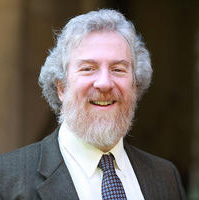The True Sin of Korah

“Now Korah, son of Izhar son of Kohath son of Levi, betook himself . . . “
These are the opening words of our parashah from Etz Hayim, the humash of the Conservative Movement, which uses a translation that generally avoids archaic English vocabulary and style. So, we should be puzzled that this translation employs a word that is certainly not a part of common usage. Why not simply say, “Now Korah took“?
This invites us to look more carefully at the Hebrew text. The verse (Num. 16: 1) opens with the Hebrew words vayikah Korah, which in many other places would indeed be translated as “Now Korah took.” However, here we have a problem. Took is a transitive verb, so it must have both a subject and an object. A verb is a “doing” word, and so we look both for the entity that is “doing the doing” (the subject) and for the entity to which the “doing is done” (the object). Clearly, Korah is the subject, but there is no apparent object. There is no hint of what Korah took—there is no description here, nor is there later, that Korah took anything.
Except himself.
So our translation follows a midrash (in Tanhuma, cited by Rashi) that sees the verb as reflexive, giving us the midrashic reading that “Korah betook himself to another side, to be separated from the midst of the community.”
Last year, Chancellor Arnold Eisen wrote a commentary on this Torah portion, expressing sympathy for the complaints brought by Korah and his followers. He noted that we can discern this sympathy for the cause of Korah among a few ancient and modern interpretations.
It seems to me that the greatest failure and transgression of Korah was not that he raised concerns—or even challenges—to the leadership of Moses, nor that he raised questions about the leadership structures emerging among the Israelites. The sin of Korah was in thinking of himself as “outside the community”; he betook himself and his followers from being part of the People of Israel, and they became a faction, catalysts for further factionalization.
Later, this theme seems to recur as we read, “But as the community gathered against them, Moses and Aaron turned towards the tent . . . ” (Num. 17: 7).
The Hebrew verb for “gather” is hikahel, from the same Hebrew root as the word kahal/kehillah, which means “congregation.” So the phrase might be translated as “the community congregated against them.” Korah has now served as a catalyst to encourage his followers to become their own “splinter congregation” against Moses and the People. This is not just a group within the community that possesses different views or a different style, but one that is formed for the main purpose of active opposition, even active destruction. The initial action of Korah, who betook himself from being a member of the People of Israel, has grown into an insurrection, a poison in the midst of the community that is so negative it leads to the destruction, by God, of all involved.
There are many challenges and questions about the structure and leadership of the Jewish People. If the questions are raised, even passionately, with care for the well-being of the People, and not from an unhealthy urge for power, then ultimately our community will be the richer.
It is not a small thing that Dr. John Ruskay, now the executive vice president and CEO of UJA-Federation of New York, was at an earlier time a strident critic of the Federation system who urged that far more resources should be allocated to Jewish education. His views, once almost revolutionary, have now become mainstream and he is charged with ongoing implementation. A generation ago, our congregations were challenged by the havurah movement, which critiqued the formal structure of services in many synagogues. We see now that many synagogues have moved to and embraced the melodies and the more participatory “style” of worship that might then have seemed radical. In recent years, a movement of “minyanim” have raised their own challenges to both synagogues and havurot, thoughtfully articulated by Rabbi Elie Kaunfer, a JTS graduate.
The community is enriched and even strengthened by challenges—and even quarrels—that are ultimately for the “sake of heaven.” The talmudic partners in debate, Hillel and Shammai, are seen as exemplars of healthy disagreement:
“A controversy that is for the sake of heaven will have lasting value, but a controversy not for heaven’s sake will not endure. What is an example of a controversy for heaven’s sake? The debates of Hillel and Shammai. What is an example of a controversy not for heaven’s sake? The rebellion of Korah and his followers.” (Avot 5:19)
Let us question and challenge, let us engage in debate and discussion. This is the way of Torah, the way of the Jewish People. JTS is a place where faculty and students believe that truth is approached and revealed by impassioned study and debate. As we debate, each of us will need to look within to be sure that our actions and the way we debate are indeed “for the sake of heaven.” We need to ensure that our most passionate debates do not cause ourselves or others to be betook, like Korah, outside the community rather than a blessing to Jewish life.
If you look at the names of almost every synagogue community, the Hebrew name of the congregation is preceded by the letter kof, repeated twice as an acrostic and standing for kehillah kedoshah (holy or sacred congregation). This invites us to gather and congregate not in the style of Korah—for our own sake—but to gather in sanctity, to build and sustain our sacred communities.
The publication and distribution of the JTS Commentary are made possible by a generous grant from Rita Dee and Harold (z”l) Hassenfeld.



